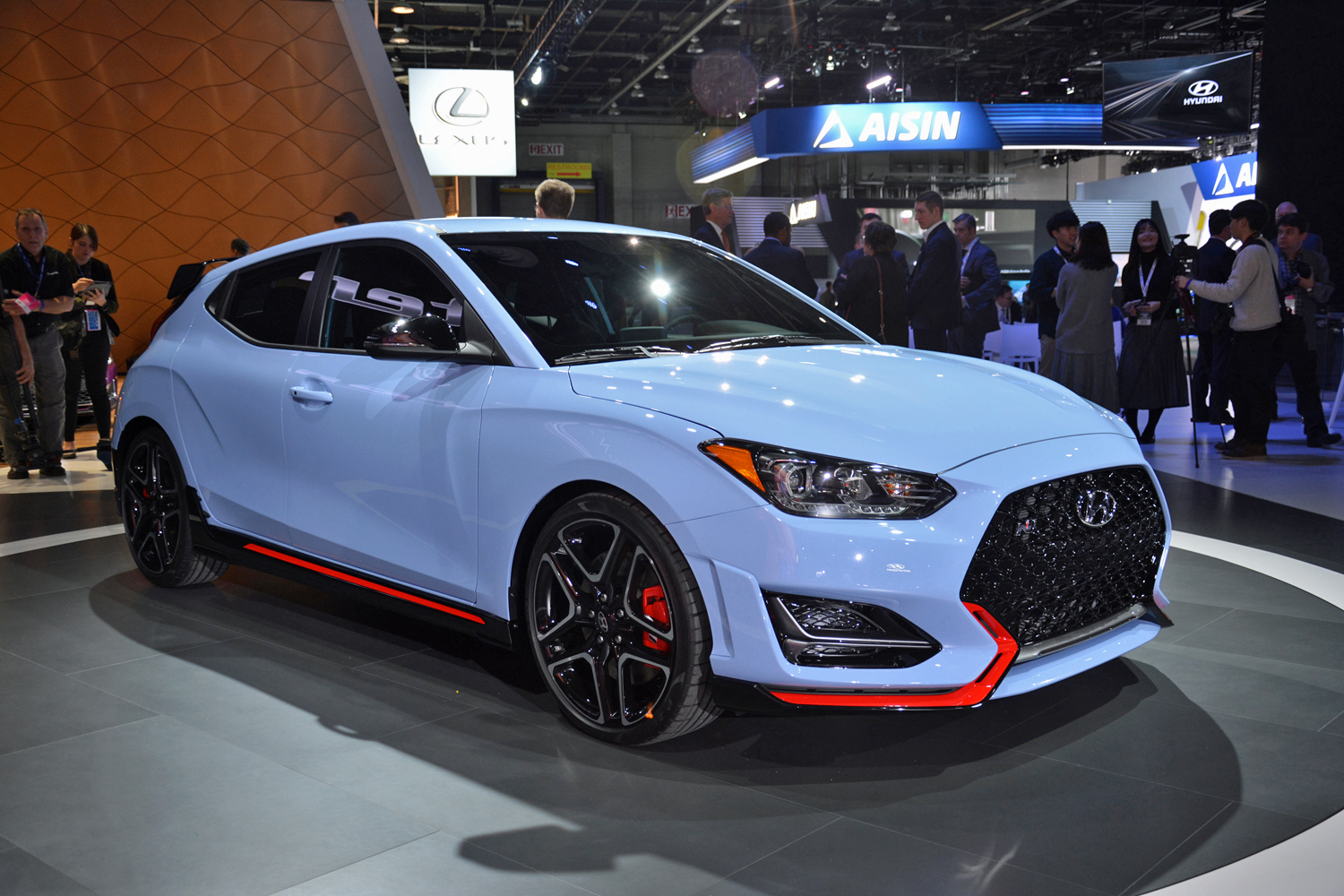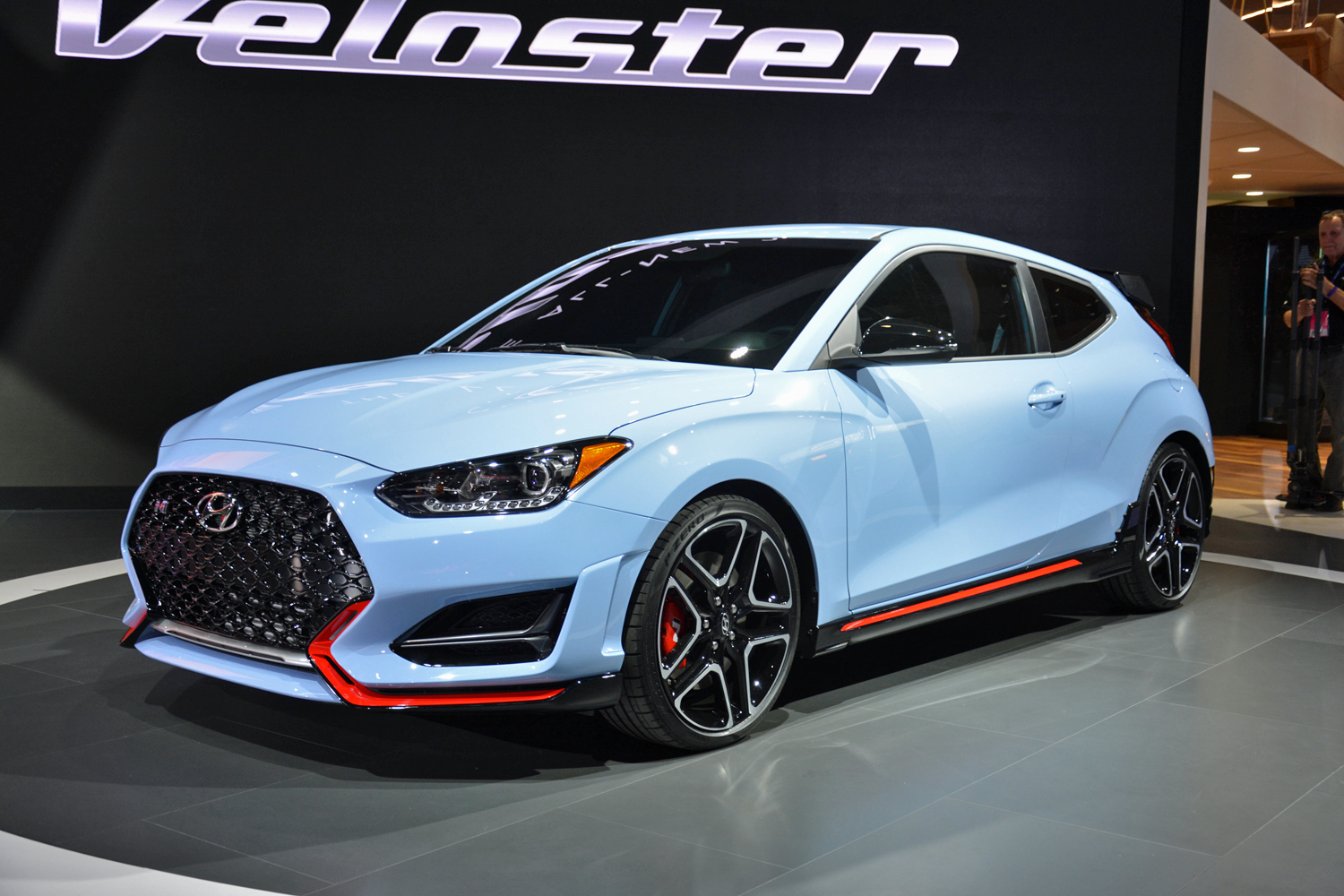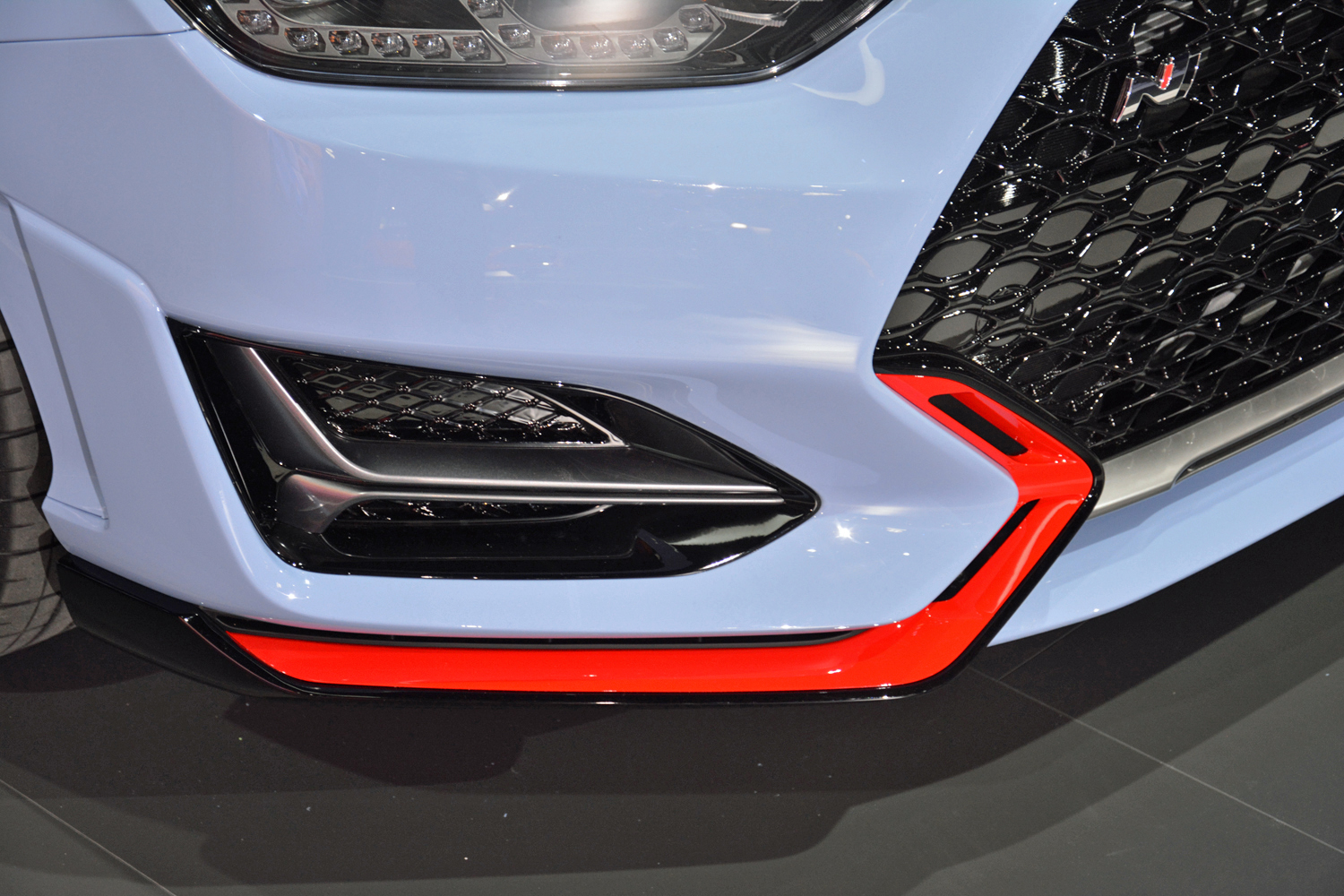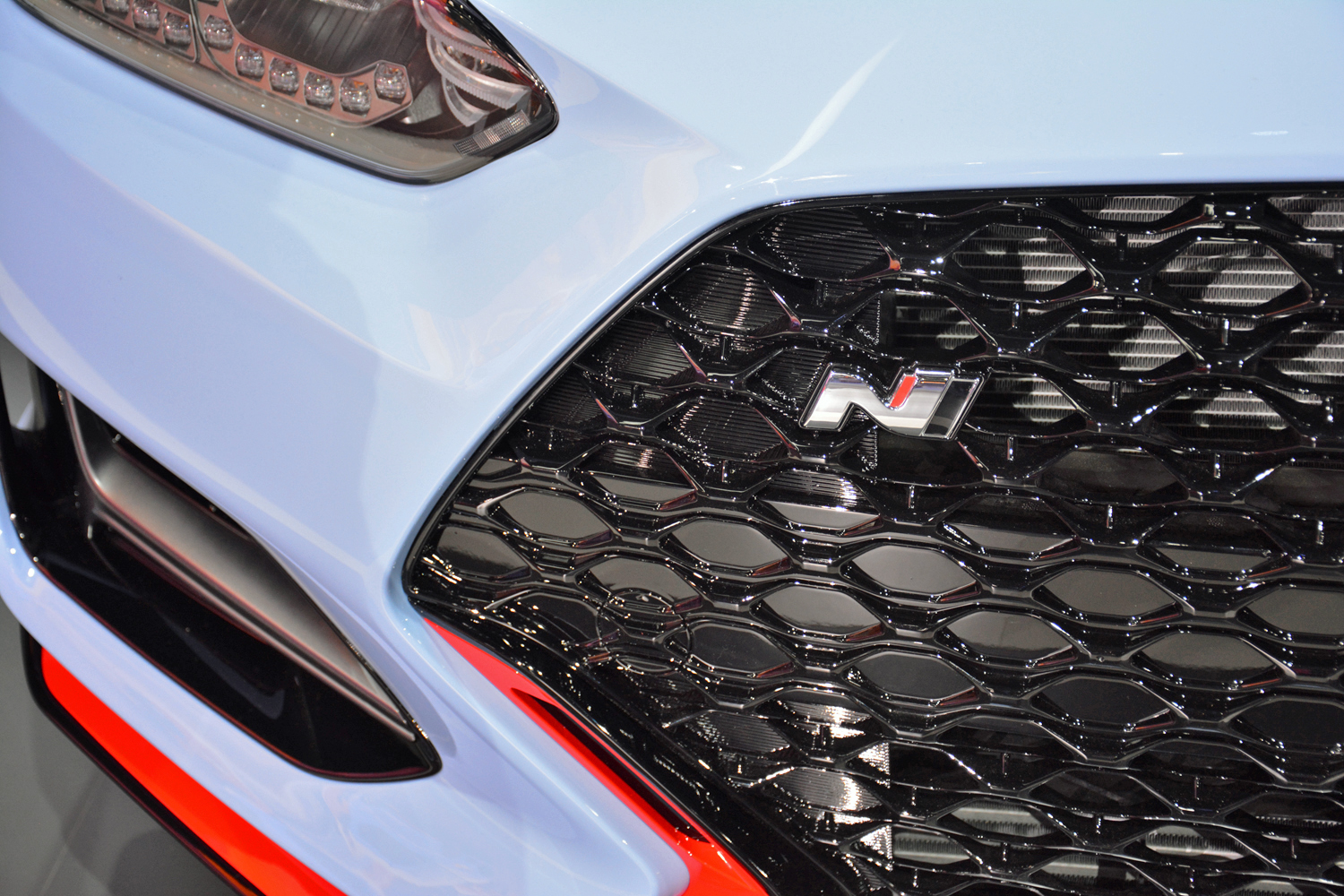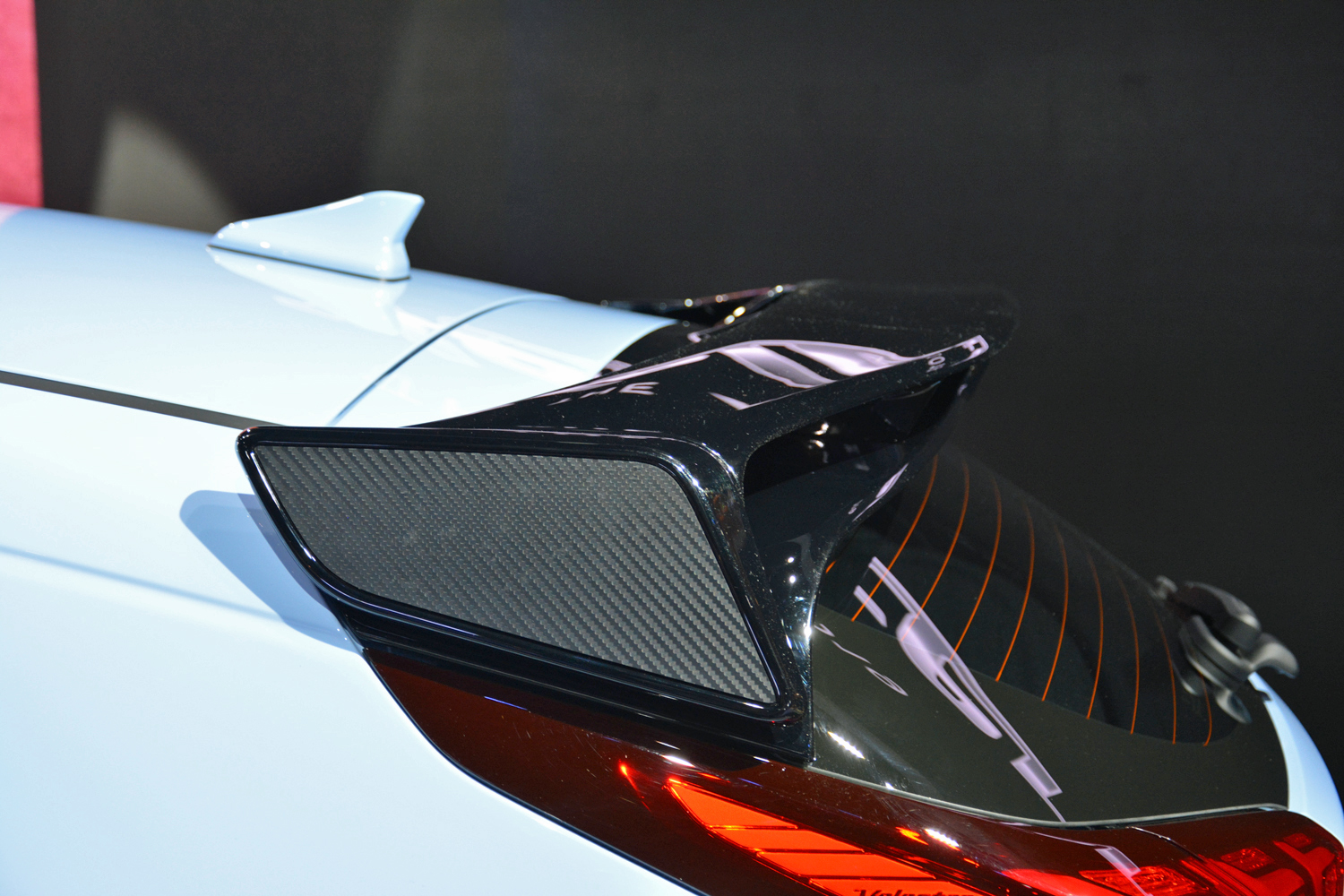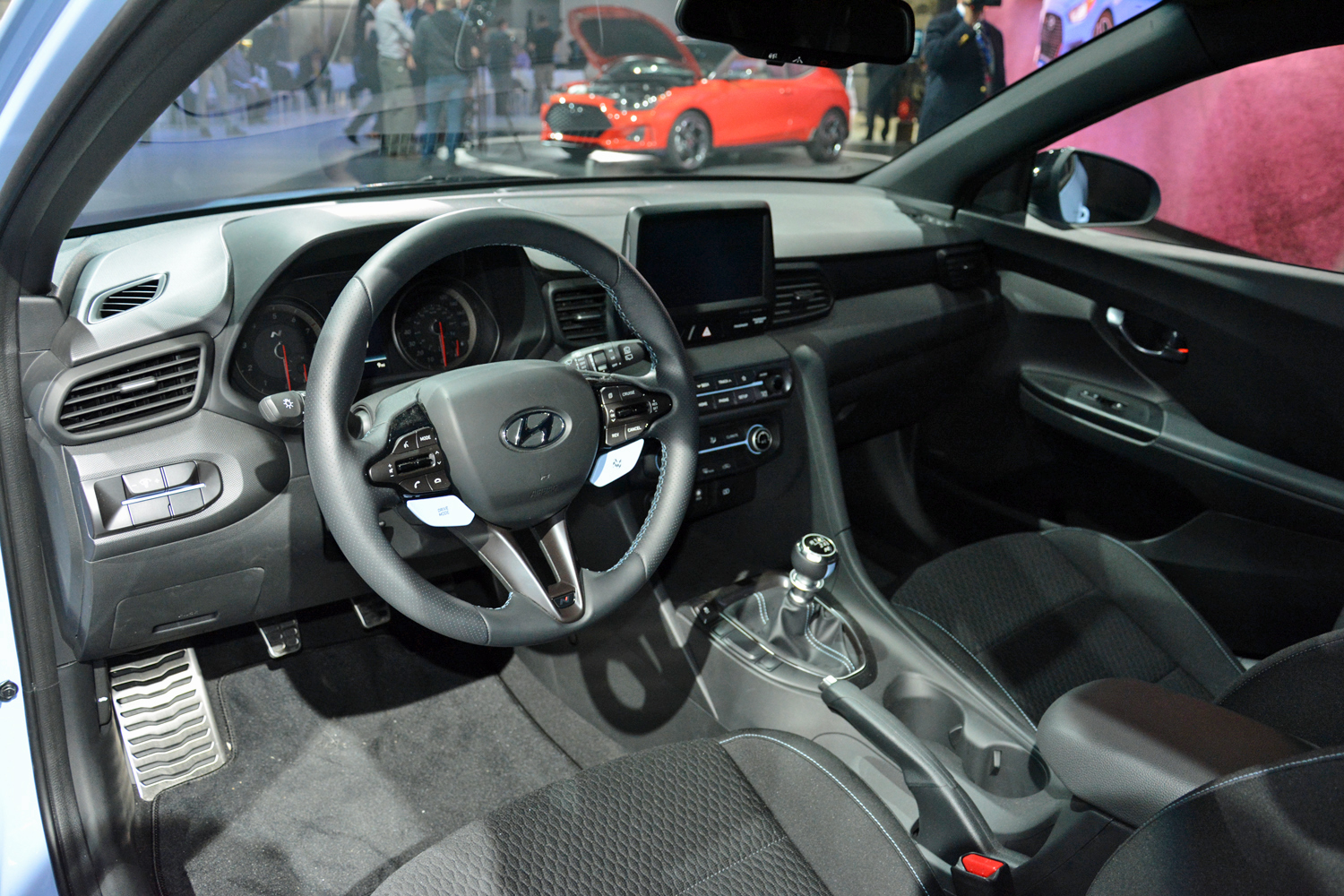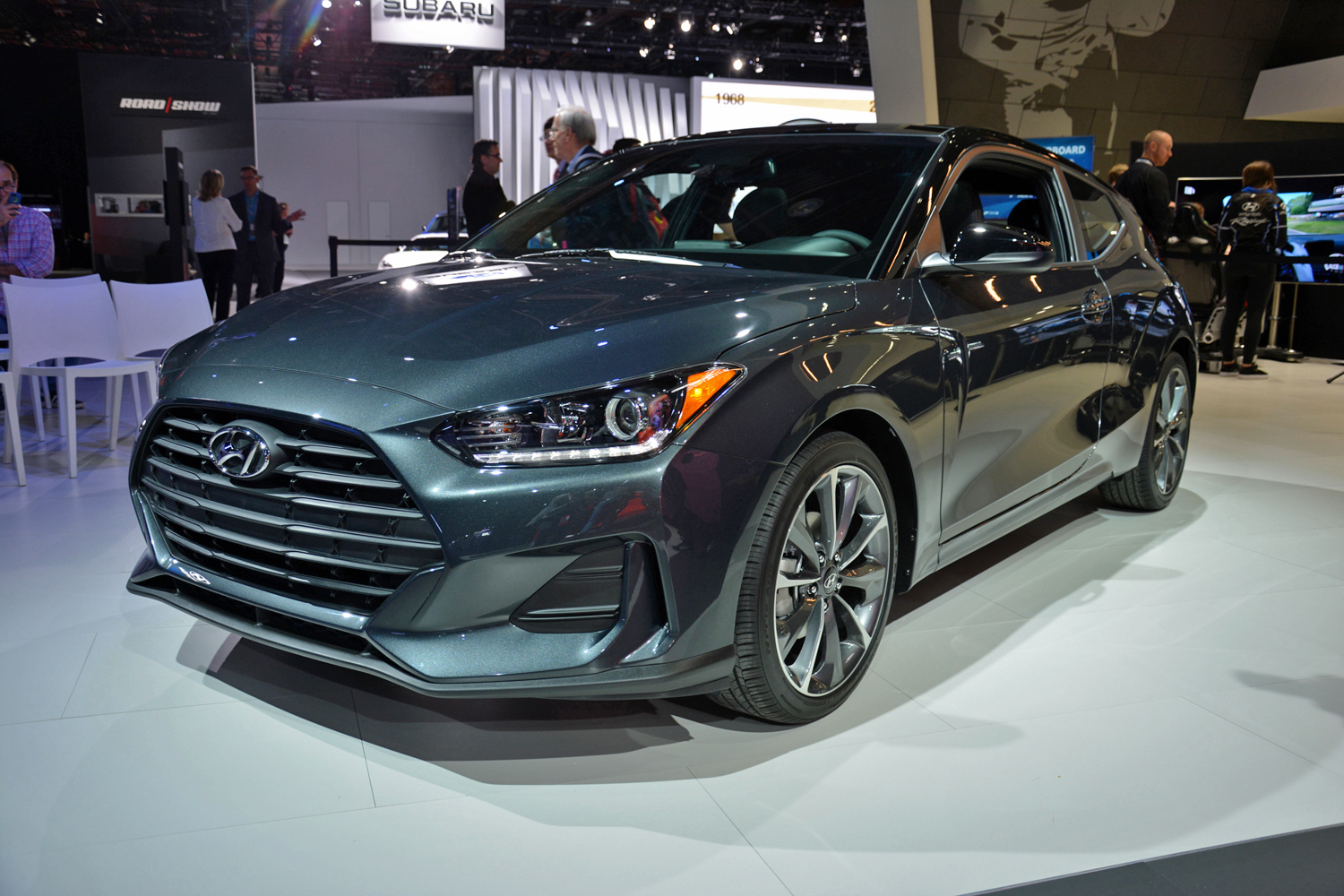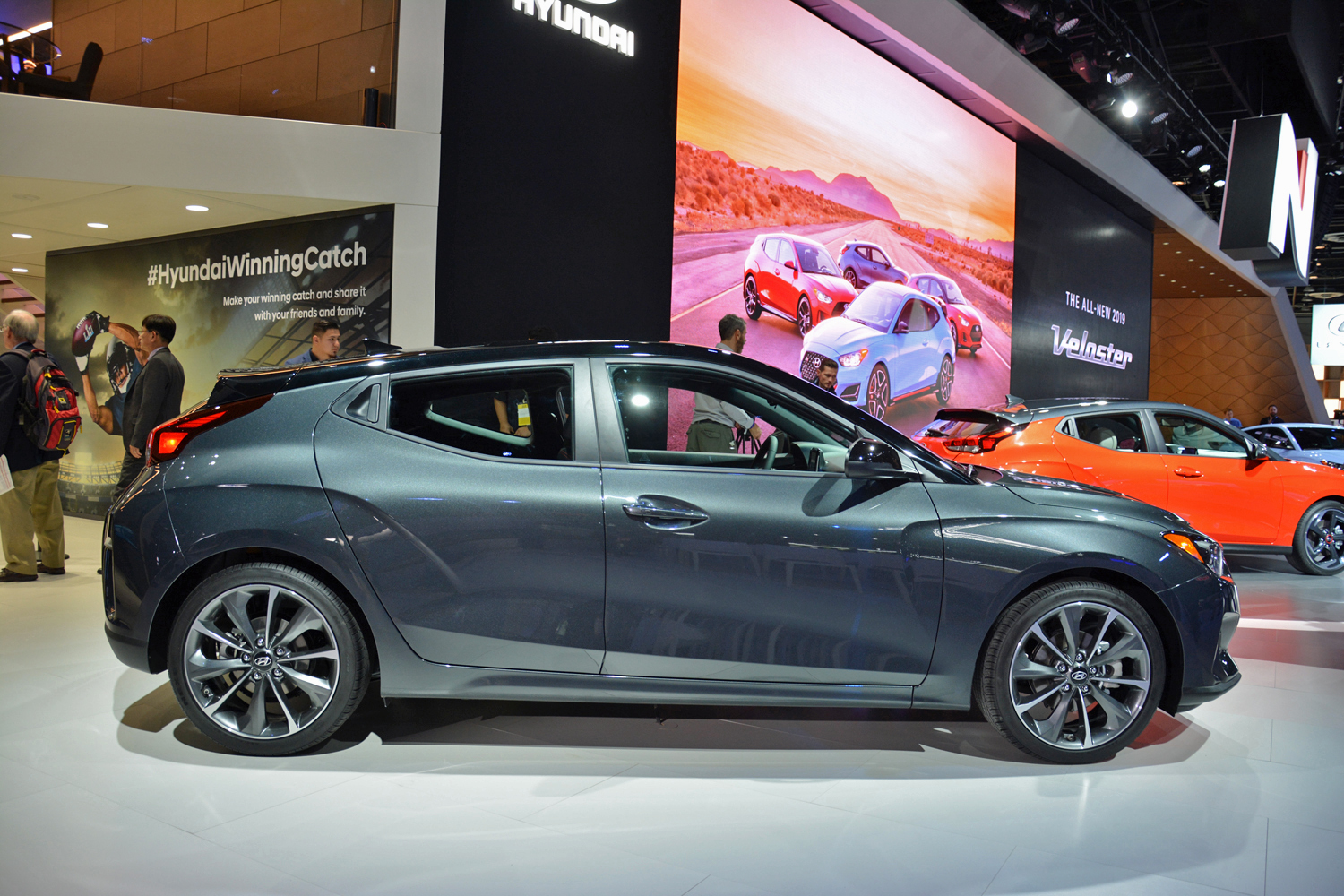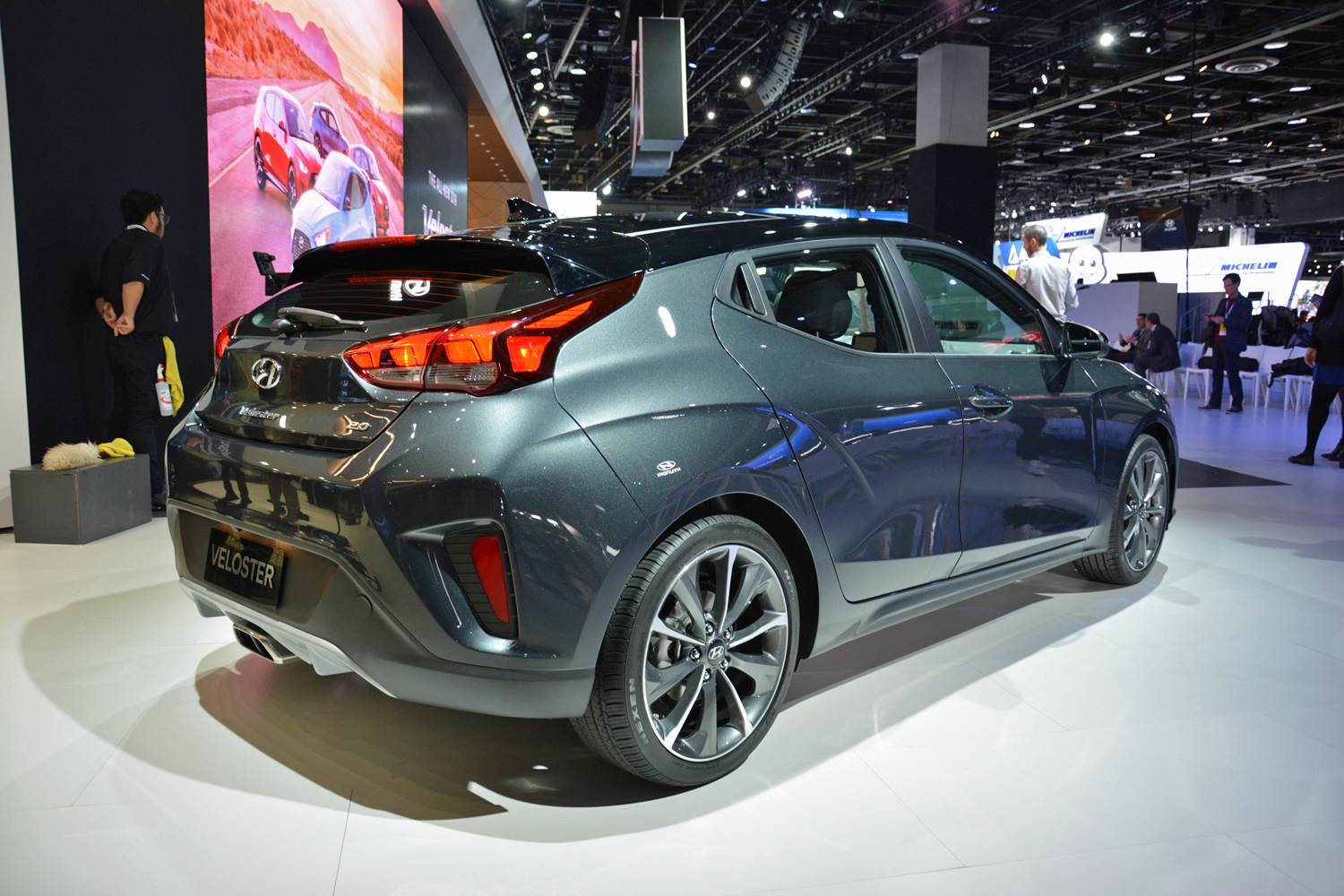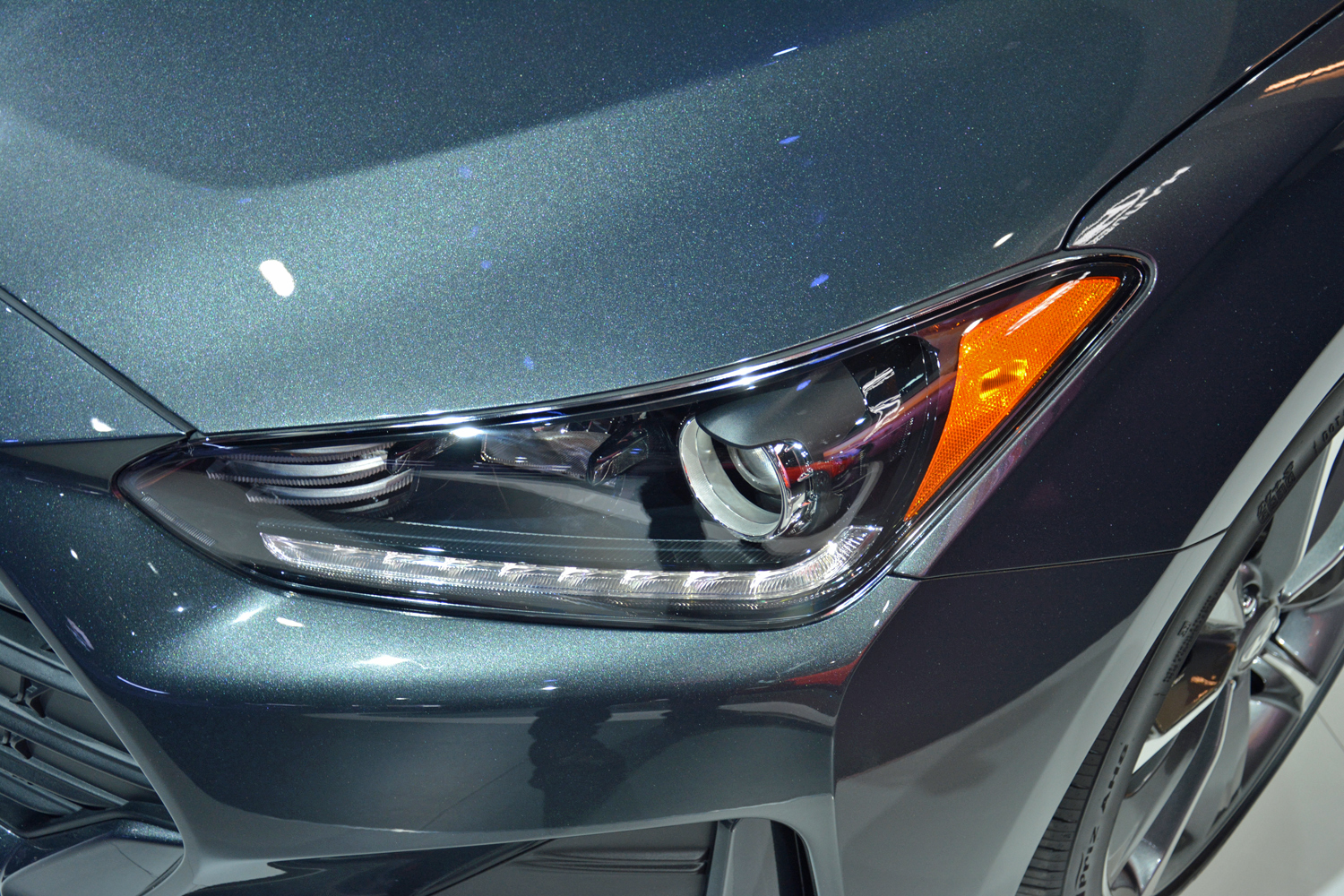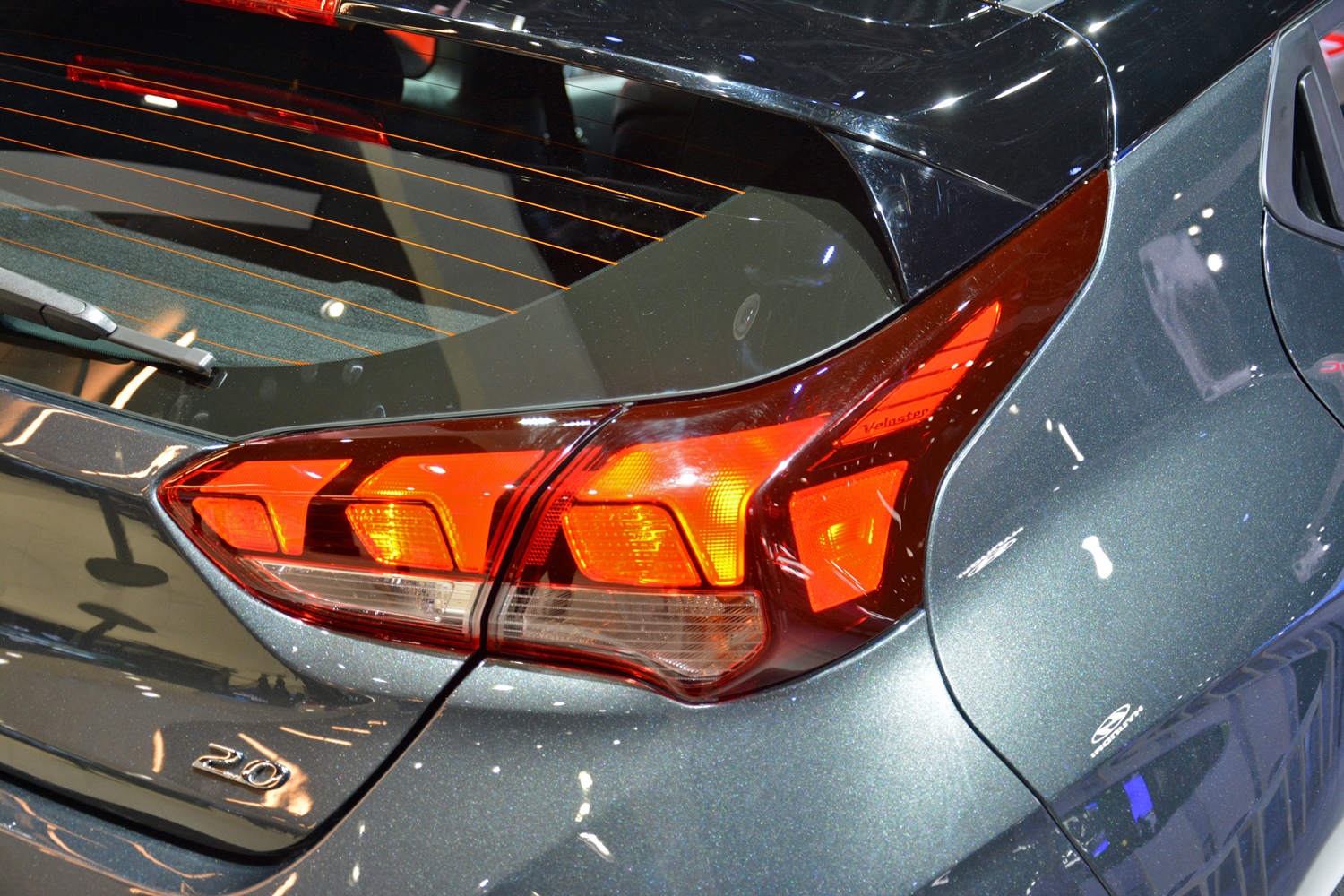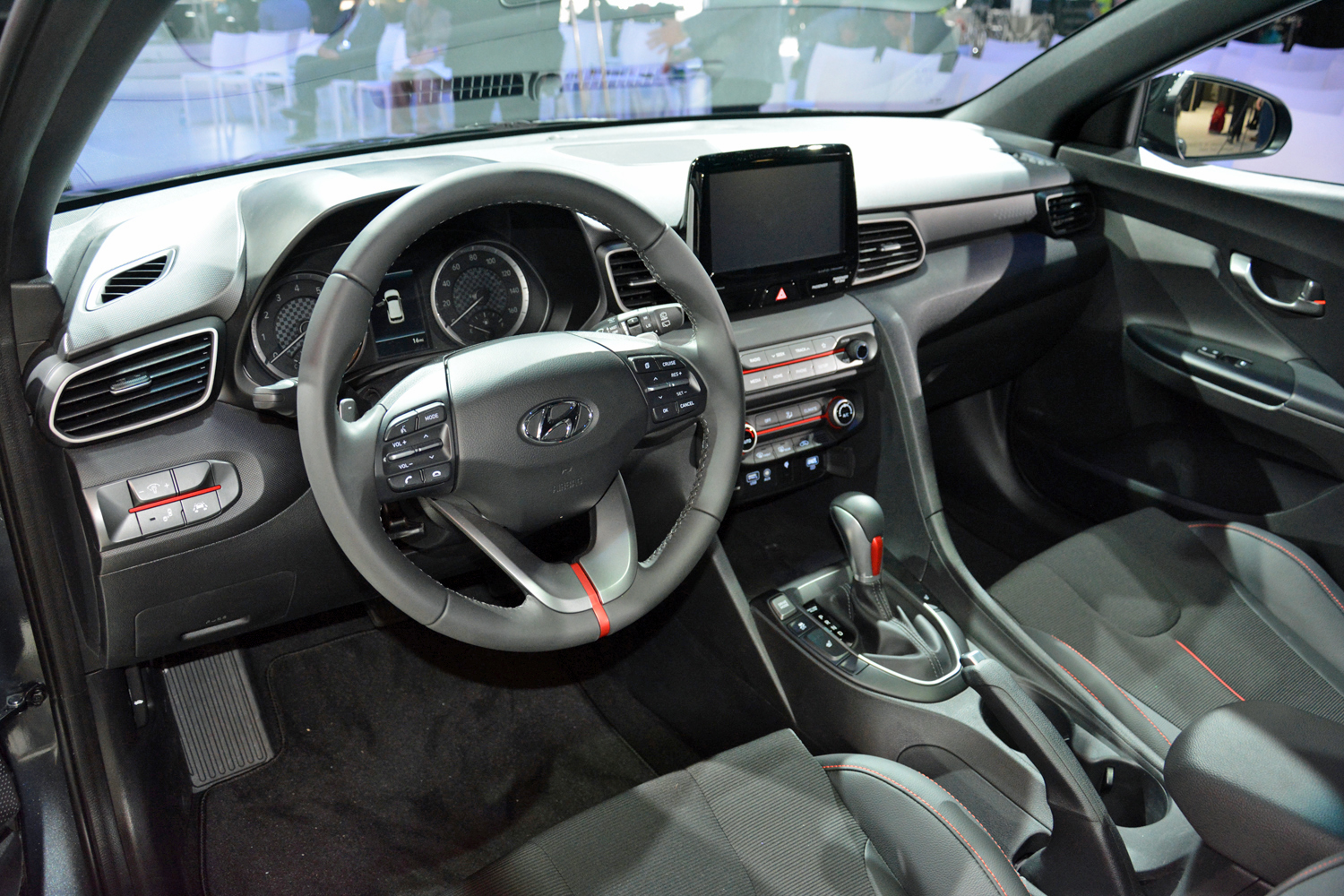It’s a busy start of the year for Hyundai. The South Korean company introduced a hydrogen-powered crossover named Nexo at the 2018 Consumer Electronics Show, and it flew straight to Detroit to unveil the all-new, second-generation Veloster. Before you ask: yes, it’s still asymmetrical.
The Veloster’s overall proportions don’t change much; they’re a big part of what makes the model stand out. It still has two doors on the passenger side and only one on the driver’s side. The front end is sharper and more mature-looking, and it falls in line with the company’s recent design language. It doesn’t take a well-trained eye to connect the dots labeled i30 and Veloster, respectively. The rear window is short and wide, as it always has been, and the chiseled tail lamps are still positioned higher up.
Designers in charge of the interior put an emphasis on connectivity and user-friendly technology. Hyundai’s Blue Link comes standard. It lets owners download a purpose-designed application to start the car remotely, set the climate control, lock or unlock the car, and locate it in a parking garage.
At launch, the lineup will include three models named Veloster, Veloster Turbo, and Veloster N, respectively. The base model uses a naturally aspirated, 2.0-liter four-cylinder engine that runs on the Atkinson cycle. It generates 147 horsepower at 6,200 rpm and 132 pound-feet of torque at 4,500 rpm. Front-wheel drive comes standard, and buyers can choose between a six-speed manual transmission and a six-speed automatic.
There’s a turbocharged 1.6-liter four-cylinder on the next rung up in the ladder. The midrange offering makes 201 hp at 6,000 rpm and 195 lb-ft. of torque from 1,500 to 4,500 rpm. The base model’s six-speed manual transmission carries over, but the optional unit is a seven-speed dual-clutch automatic. Front-wheel drive is, again, the only configuration offered, though all Veloster models come with torque vectoring.
The Veloster introduces Hyundai’s performance-oriented N sub-brand to America. Like the i30 N sold abroad, Veloster N models gets an evolution of the Turbo’s 2.0-liter tweaked to pump out 275 hp and 260 lb-ft. of torque between 1,450 and 4,700 rpm. Hyundai hasn’t released performance specifications, but we know the Veloster N benefits from bigger brakes and a model-specific suspension system. It’s the hot-rodded handling champ of the Veloster family.
Hyundai will begin building the second-generation Veloster next March. The first example will disembark on American shores in the second quarter of the year. Look for a pricing announcement before then.
Editors' Recommendations
- VinFast’s new electric cars will be available in the U.S. this year
- HMD Global shows its serious about U.S. expansion with 5 new Nokia phones
- Huawei’s new plan may help it circumvent U.S. sanctions
- Motorola’s new Moto Edge coming to the U.S. in September
- Jaybird’s new Vista 2 wireless earbuds are tough enough for the U.S. military
